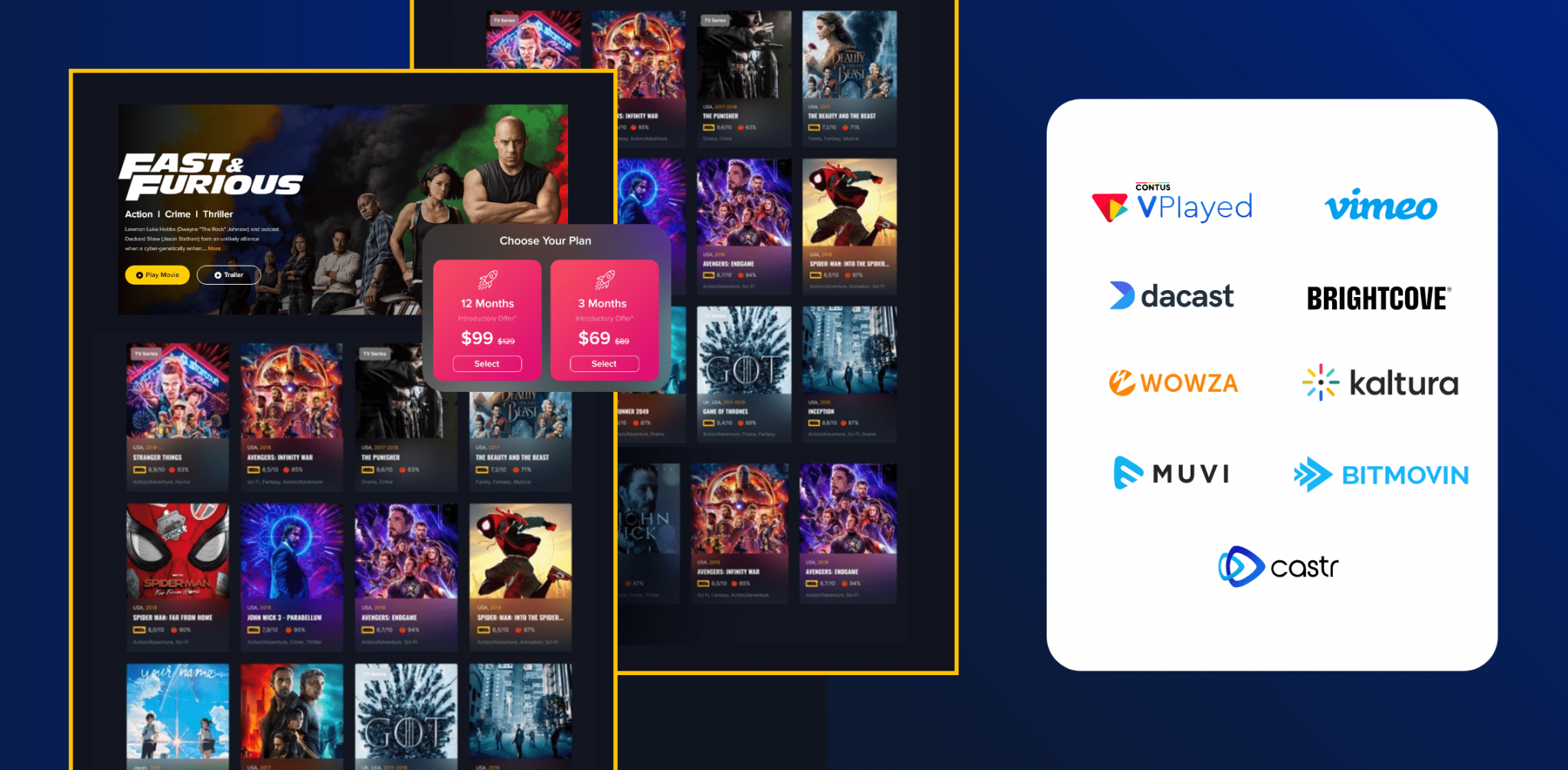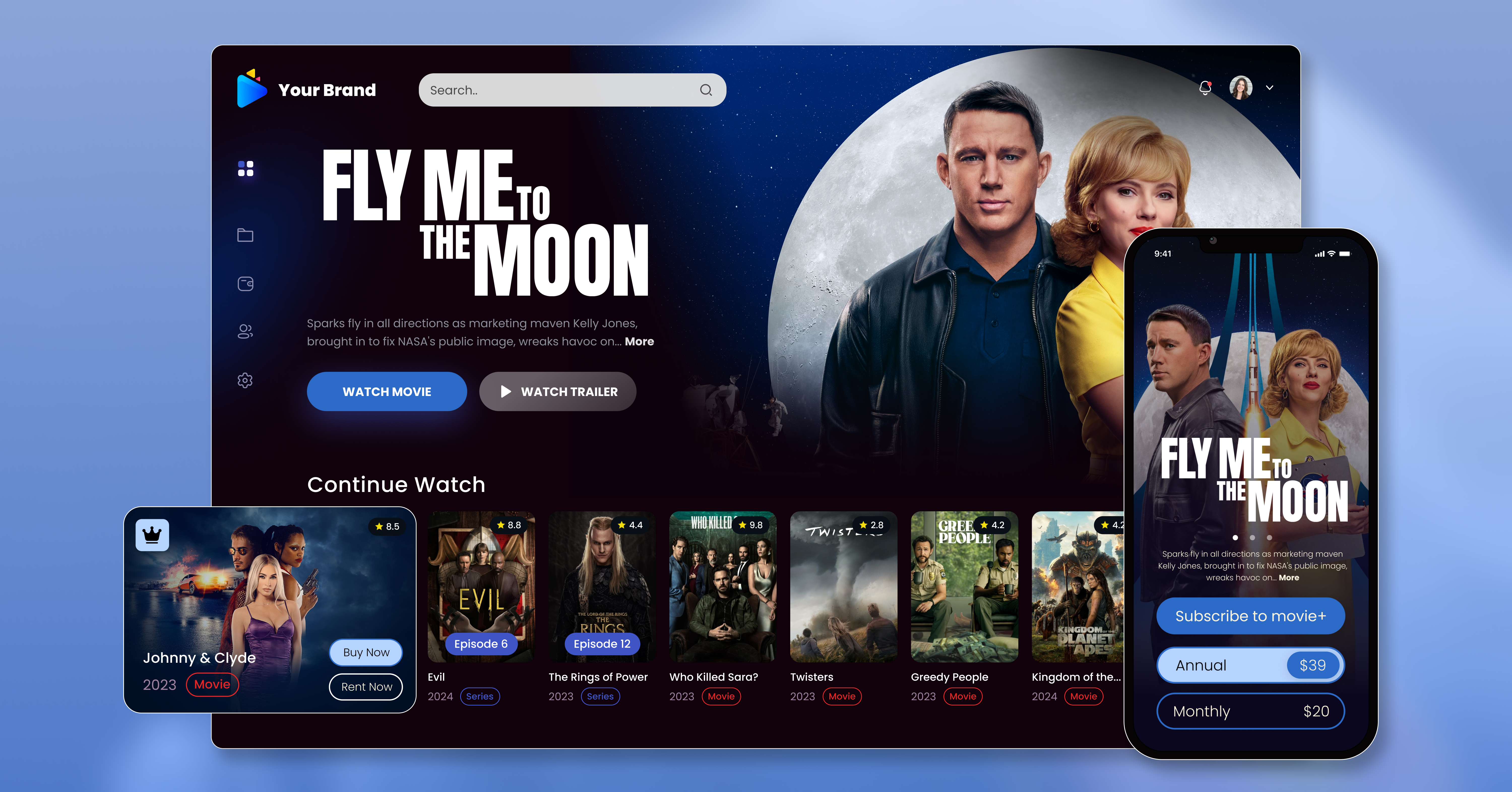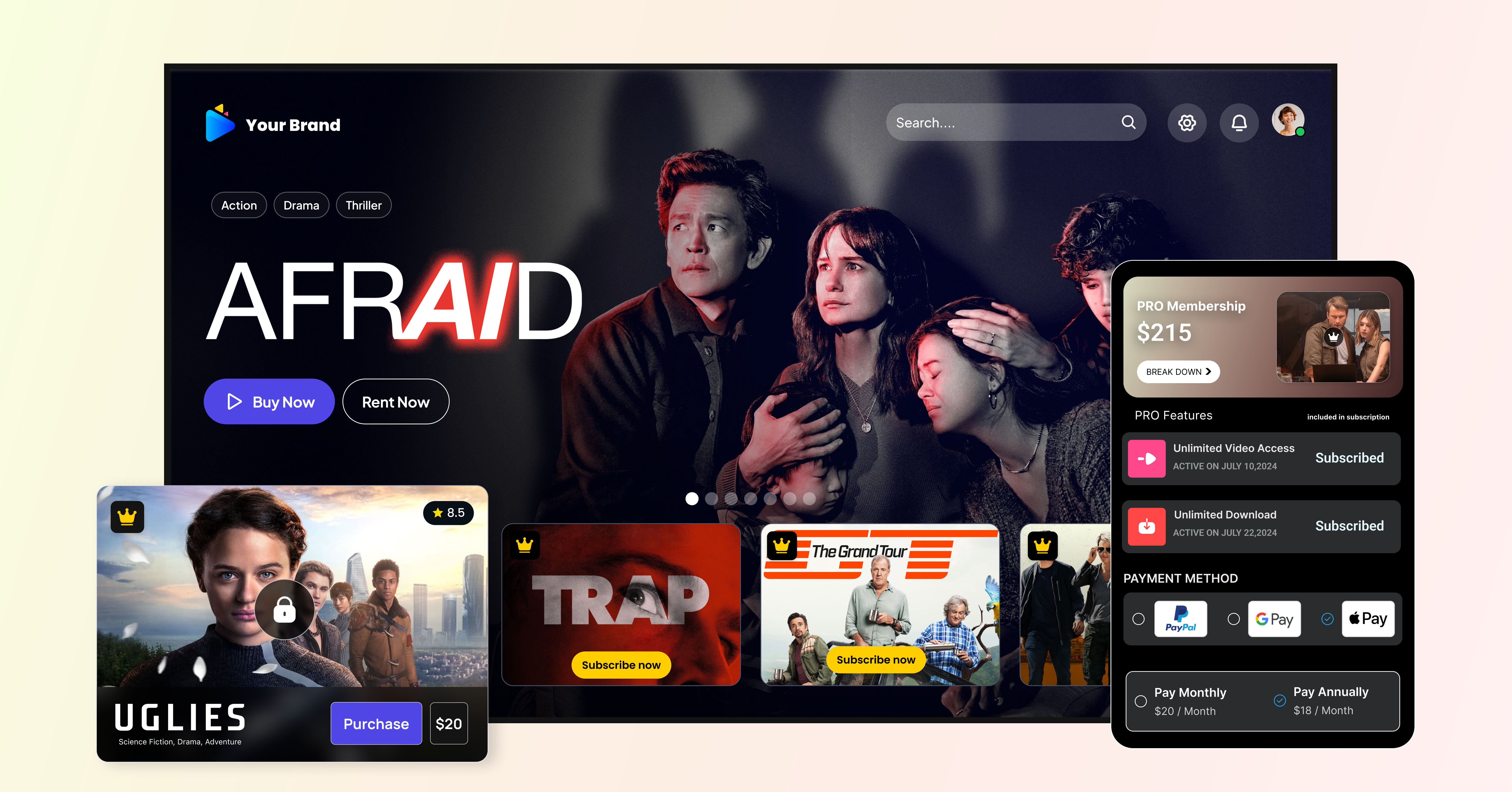Stream & Earn Revenue From Your Video Content With 10+ monetization Models & 1000+ Features.
Book a Free DemoAVOD vs SVOD vs TVOD: Choose the Best VOD Model
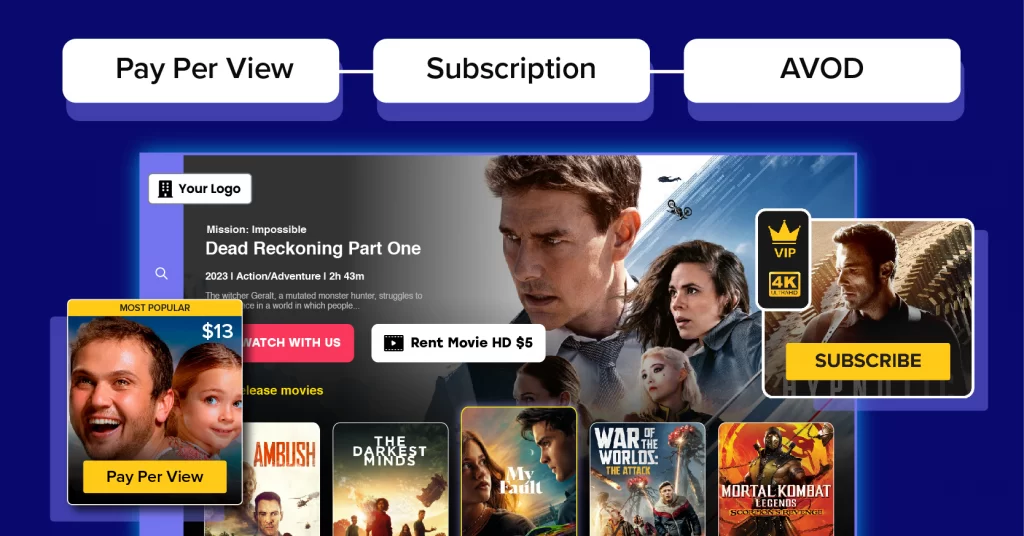
Are you a video entrepreneur looking to monetize your videos? Well, chances are you’re struggling to finalize the right model (AVOD vs SVOD vs TVOD) to monetize your videos.
Maybe you’re not alone.
Numerous video entrepreneurs face the same problem, especially during their initial days.
But why is it so essential to pick a suitable monetization model?
Because selecting the right revenue model serves two essential purposes for your business.
One, it defines the value proposition of your products/services.
Two, it lays a solid groundwork for the long-term sustainability of your business.
After all, businesses need revenue to sustain their operations and scale further.
It is also noted that different revenue models cater to different business niches.
In recent years, three revenue models — SVOD, TVOD and AVOD — have gained traction across verticals.
The global streaming market was valued at $89.03 billion (as of 2022).
In fact, the streaming industry is poised for a whopping 21.5% CAGR from 2023 to 2030. These three models will account for the lion’s share of the industry growth. So much so that they are expected to garner three-fourths of all the growth.
Thus, studying the operating dynamics of these revenue models is imperative.
So, let’s review the three revenue models and understand how they work, their benefits, and their use cases.
- Fully Customizable
- Lifetime Ownership
- On-Premise/On-Cloud
- 100% White-label
- Zero Revenue Share
- Hire Developers
Table of Contents
AVOD vs SVOD vs TVOD: How Do They Work?
Subscription video on demand(SVOD), Transaction video on demand (TVOD), and Advertisement video on demand (AVOD) are three of the most preferred options in video monetization models.
1. Subscription Video On Demand (SVOD)
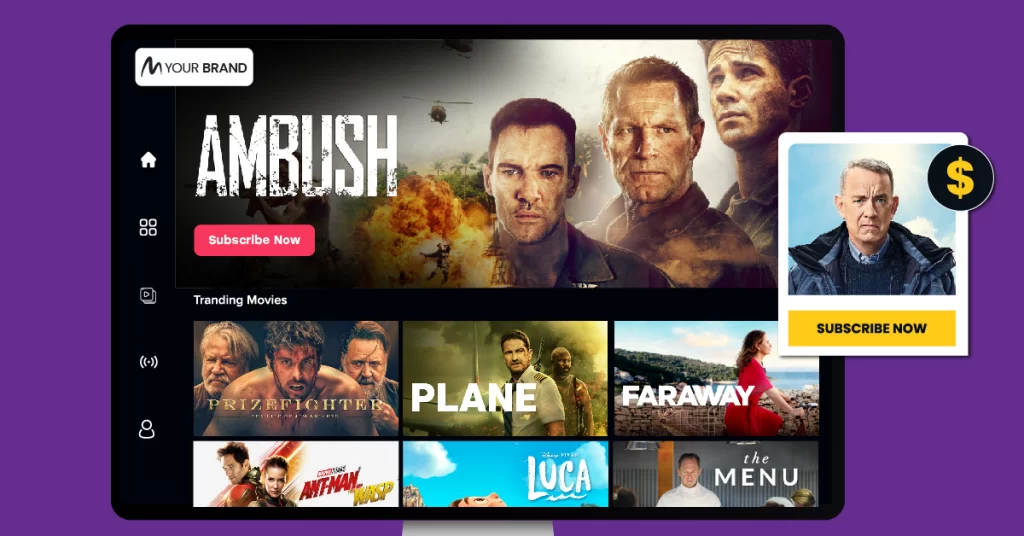
The subscription video on demand (SVOD) is businesses’ most commonly used revenue model to monetize video content.
Instead of making a one-time purchase, you pay a recurring fee — mostly a nominal amount — at regular intervals to access and use the product or service.
Let’s take Netflix, for instance.
When you sign up for a Netflix subscription, you pay a monthly fee to gain unlimited access to their vast library of movies and TV shows.
And, as long as you continue paying the subscription fee, you can watch as much content as possible.
Another great example is a magazine subscription.
Instead of buying individual issues, you can subscribe to a magazine monthly or annually.
You pay a fixed amount for a specific duration, such as a year or a month. Then, you will receive the magazine regularly throughout that period.
Generally, subscriptions include added perks like exclusive content or discounts for loyal subscribers.
However, you will lose access to the product or service if you stop paying the subscription fee.
Key Benefits of the Subscription VOD Model:
- Recurring Revenue: Generate consistent income through regular customer subscription payments.
- Customer Loyalty: Build a loyal customer base that remains engaged and committed to your offerings.
- Predictable Cash Flow: Enjoy stable and predictable cash flow, aiding financial planning and business growth.
- Upselling Opportunities: Offer subscribers additional products or premium tiers, increasing revenue potential.
- Enhanced Customer Relationships: Foster ongoing relationships, understand customer preferences, and deliver personalized experiences.
2. Transaction Video On Demand (TVOD)
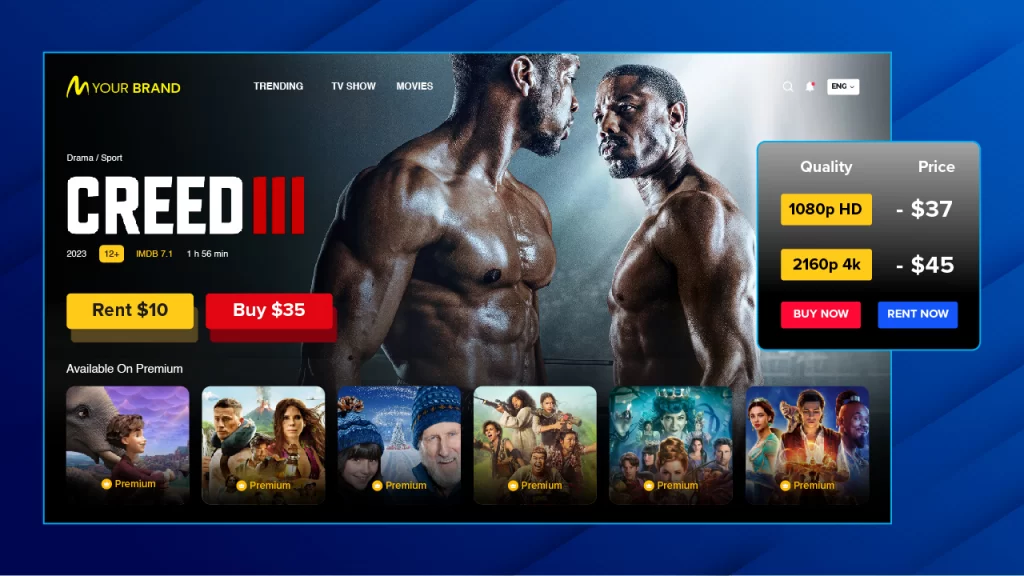
In the Transaction video on demand revenue model, you pay a fee to access content or an event on a one-time basis. You can consume the content once or until it ends.
Let’s take the example of a live sports event — the Super League Grand Finals.
Instead of subscribing to a sports channel, you can pay for just one view.
You pay a one-time fee, usually before the event begins, to gain access to the live broadcast.
And, once the event is over, your access to that content ends.
Another example is a movie rental service.
Instead of paying a monthly subscription fee — as you do in a streaming business — you can rent a specific movie for a specific period.
You pay a fee to watch that movie once. And you typically have only a limited time to view it before the rental period expires.
The key benefit of the TVOD mode is that you pay only for the content you are interested in. Unlike SVOD, it has no long-term commitments.
You can enjoy events or access exclusive content without needing a recurring payment.
Key Benefits of the TVOD Model:
- Flexibility: Customers can choose and pay for specific content or events.
- Cost Control: Pay only for the content or events you want to access.
- No Long-Term Commitments: No need to subscribe or enter into recurring payment agreements.
- Exclusive Access: Enjoy exclusive access to specific content or events for a limited time.
- Variety of Choices: Access a wide range of content or events on a TVOD basis.
Looking To Build Your Own Video Monetization Platform?
Start and Grow Your Video Streaming Service With 1000+ Features & 9+ Revenue Models.
 Highly Customizable
Highly Customizable Life Time Ownership
Life Time Ownership Own 100% of Your Revenue
Own 100% of Your Revenue
 Full-Branding Freedom
Full-Branding Freedom

3. Advertisement Video On Demand (AVOD)
AVOD, or advertising video on demand, is an OTT video monetization platform where users can watch videos mixed with ad commercials without purchasing subscriptions.
In AVOD, you can access videos of your choice on various screens. However, this comes at the cost of enduring commercial interruptions.

In a way, it is a win-win situation for both creators and consumers.
Viewers can enjoy free content. And companies generate revenue to sustain their platforms and produce additional video content.
Notable AVOD providers include YouTube, Facebook Watch, Peacock, IMDb TV, and Pluto TV.
Key Benefits of AVOD
- Access to Free Content: Users can access a wide range of videos without paying for subscriptions or content access fees.
- Broad Content Library: AVOD platforms often offer a diverse selection of videos. It includes movies, TV shows, and user-generated content.
- Reduced Financial Barrier: AVOD eliminates the need for upfront payment. Clearly, it is more accessible for users who cannot afford subscription fees.
- Platform Maintenance and Content Creation: The revenue generated from advertisements supports platform upkeep and updation. It also enables the creation of new and engaging video content.
- Availability on Multiple Devices: AVOD can be accessed on various screens, including smartphones, tablets, smart TVs, and computers. Undoubtedly, it provides convenience and flexibility to the viewers.
AVOD vs SVOD vs TVOD: Choose the Best VOD Model
These models have several convergence points. After all, they all involve video-on-demand services.
In simple terms, all of them are revenue models that allow you to watch videos whenever you want.
However, the difference lies in how to monetize your videos and accessed.
Recommended Reading
SVOD vs TVOD vs AVOD: How Do They Differ?
The three models AVOD vs SVOD vs TVOD, are fundamentally different in how they work. Let’s explore each one of them in detail and understand how they differ from each other.
| Parameters | SVOD | TVOD | AVOD |
|---|---|---|---|
| Payment | Requires a recurring subscription fee. | Pay-per-view or rental basis for specific content. | Free access to content, but viewers must watch ads interspersed with content. |
| Access to Content | Subscribers have unlimited access to a content library. | Limited access to content based on rental/purchase selections. | Limited access to content with intermittent ad interruptions. |
| Subscription Model | Monthly or annual subscription payment is required. | No subscription is needed. | No subscription is needed. |
Commercial Interruptions | No ads during content playback. | No ads during content playback. | Content is periodically interrupted by ads. |
| Revenue Model | Relies on subscription fees from a large user base. | Relies on individual rentals or purchases of specific content. | Relies on advertising revenue generated from ads shown to viewers. |
| Examples | Netflix, Amazon Prime Video, Disney+, Hulu | iTunes, Google Play, Vudu, Amazon Video (rental/purchase) | YouTube, Hulu (AVOD tier), Pluto TV, Crackle |
Conclusion:
So, which is the right model to monetize your videos — AVOD vs SVOD vs TVOD? Well, it ultimately depends on your business goals and the nature of the target audience.
SVOD offers the advantage of recurring revenue generation and unlimited access to a content library. And this makes it suitable for businesses aiming to build a loyal subscriber base.
TVOD allows for monetization on a per-view basis. So, it benefits businesses offering exclusive or premium content that viewers are willing to pay for individually.
On the other hand, AVOD on a vod platform can attract a wider audience by providing free access to content. Still, it relies mainly on advertising revenue. So, it may not be ideal for businesses primarily focused on monetization.
And what should you bear in mind before choosing your revenue model?
When making the final cut, consider your audience’s preferences, content offerings, and revenue goals.
In addition, you can also employ a combination of these models, something like a hybrid model. Try experimenting with different approaches to find the right fit for your streaming business.
Remember, the streaming industry is dynamic, and what works best today may evolve over time.
So, stay flexible and responsive to your audience’s needs and marketing dynamics. And you’ll be on your way to a successful streaming business.
- Request Demo Book a Live, Personalized Demo
- Contact Sales Reach Out to Our OTT Experts

